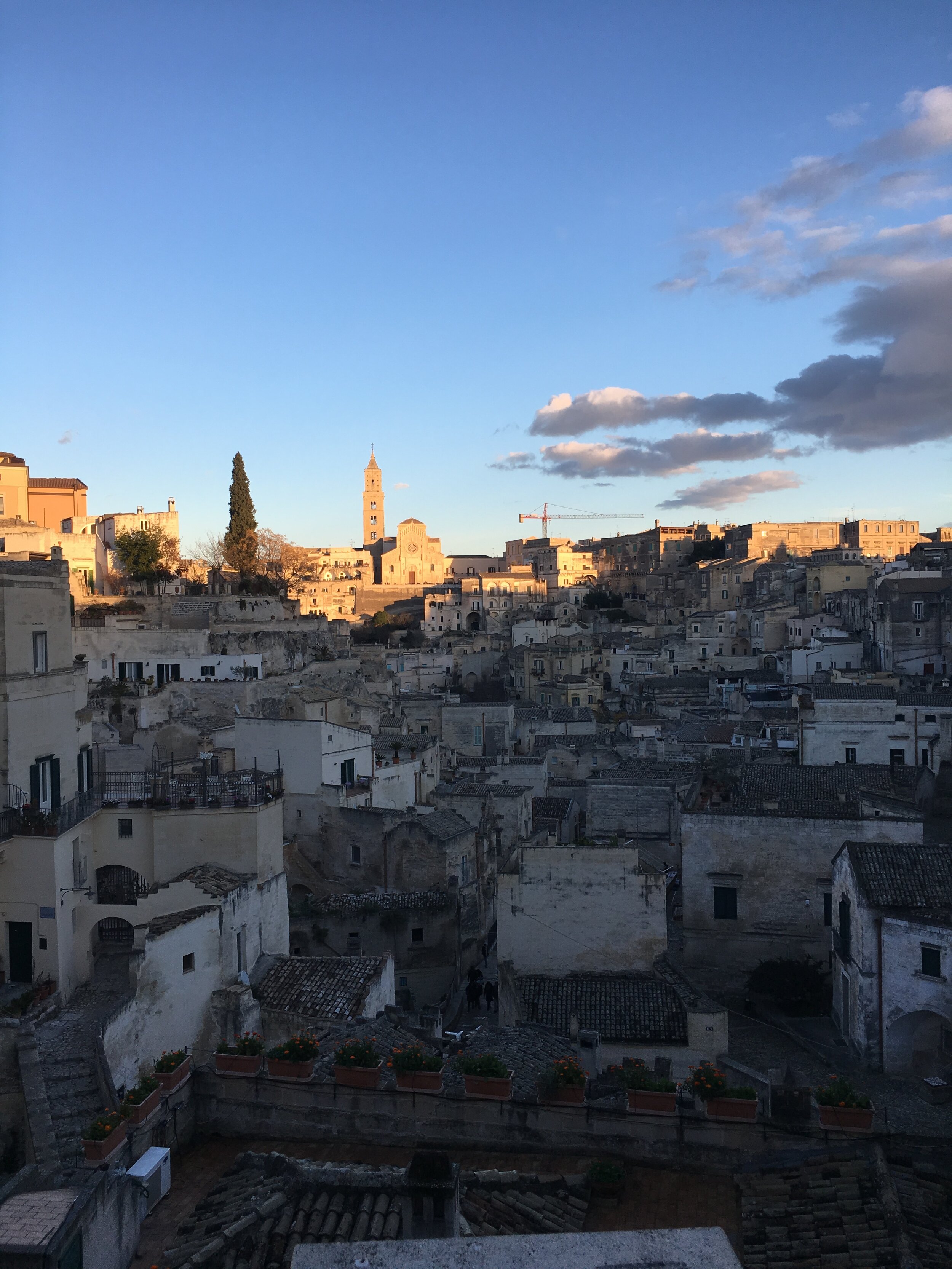Spots in Matera
Sassi Caveoso
These sassi are the older ‘cave like’ ones, as suggested by the name. Miraculously many of these old cave dwellings have been preserved and left “intact”. According to the Italian Tourism website, the sassi that were dug into the Via Casalnuovo are particularly well-preserved, so be sure to find this street and observe. In the area of the Sassi Caveoso is San Pietro Caveoso. Although ‘built’ in the mid 18th century in Baroque style, it is one of the best places to take in the views all around. Above this church on a ‘rocky spur’ is the evocative grotto style 15 the century church of Santa Maria de Idris. It is also pictured in the cover photo to this post.
Sassi Barisano and views from and of the Santa Maria Della Bruna cathedral
The other group of sassi appear more modern and were created with “more complex building techniques” according to the Matera With Me website. The group of Sassi Barisano are larger and contain the examples of sassi being turned into shops, restaurants and even hotels. The church of Santa Maria Della Bruna, also known as the Matera cathedral was built in the 13th century, and it is dedicated to the Virgin Mary under the name of Madonna della Bruna and also to Saint Eustace. The church sit atop the highest point in the city of Matera, and there is a gorgeous view over the group of Sassi Barisano from this point.
Park of the Murgia Materana and Rupestrian Churches
The ‘park’ forms a part of the UNESCO designated site along with the famous sassi. The park, however, is indeed the dramatic natural scenery characterized by the great ravines and rocks you can observe from the city walls of Matera. Then, there are the ‘rock churches’, about 150 of them, built into the natural setting, mostly in the early middle ages, although cave dwellers inhabited the area since pre-historic times as explained. As stated on the UNESCO website, the Murgia is “a calcareous highland plateau characterized by deep fault fissures, ravines, rocks and caves.” Gazing at this landscape, I remember thinking it seemed otherworldly, that phenomenon of the presence of ancient cave churches built into these rocks seeming like a scene out of a science fiction novel, a planet in “a galaxy far far away".” On the other hand, I remember thinking, maybe it just seems un-Italian. I should see this landscape in the north of Scotland, in Ireland perhaps, but not in Italy. Indeed, the UNESCO website continues in a statement that certainly resonants and speaks to the uniqueness of this landscape: “The morphology of the territory, characterized by deep ravines (gravine) and bare highland plateaus, integrated with ancient cave churches, shepherd tracks marked by wells, and fortified farmhouses, form one of the most evocative landscapes of the Mediterranean.” Evocative and unexpected, in my opinion. Get here and experience it for yourself.
Palombaro Lungo (the Cistern)
I was surprised to learn that there was a very central and large cistern in Matera. It is located underneath the Piazza Vittoria Veneto, and it supplied water to the city from the early 19th century. This underground water supply was necessary because of the infrequent rainfall in the region. The site was only rediscovered in 1991, which seems quite unbelievable, yet in the context of the city’s life story, it makes sense. As the ‘shame of Italy’ the entire population was moved out of the city in the 1950s and the Renaissance only started tentatively in the 1970s and 1980s, it is feasible that there was not much focus ‘underground’ initially. You can book a 25 minute tour in English or Italian. We found the tour to be the perfect length with just enough history as we wandered through the cavernous interiors, climbing first down then back up on elevated walkways over (now) shallow emerald colored waters. Here is some additional information on this site.




